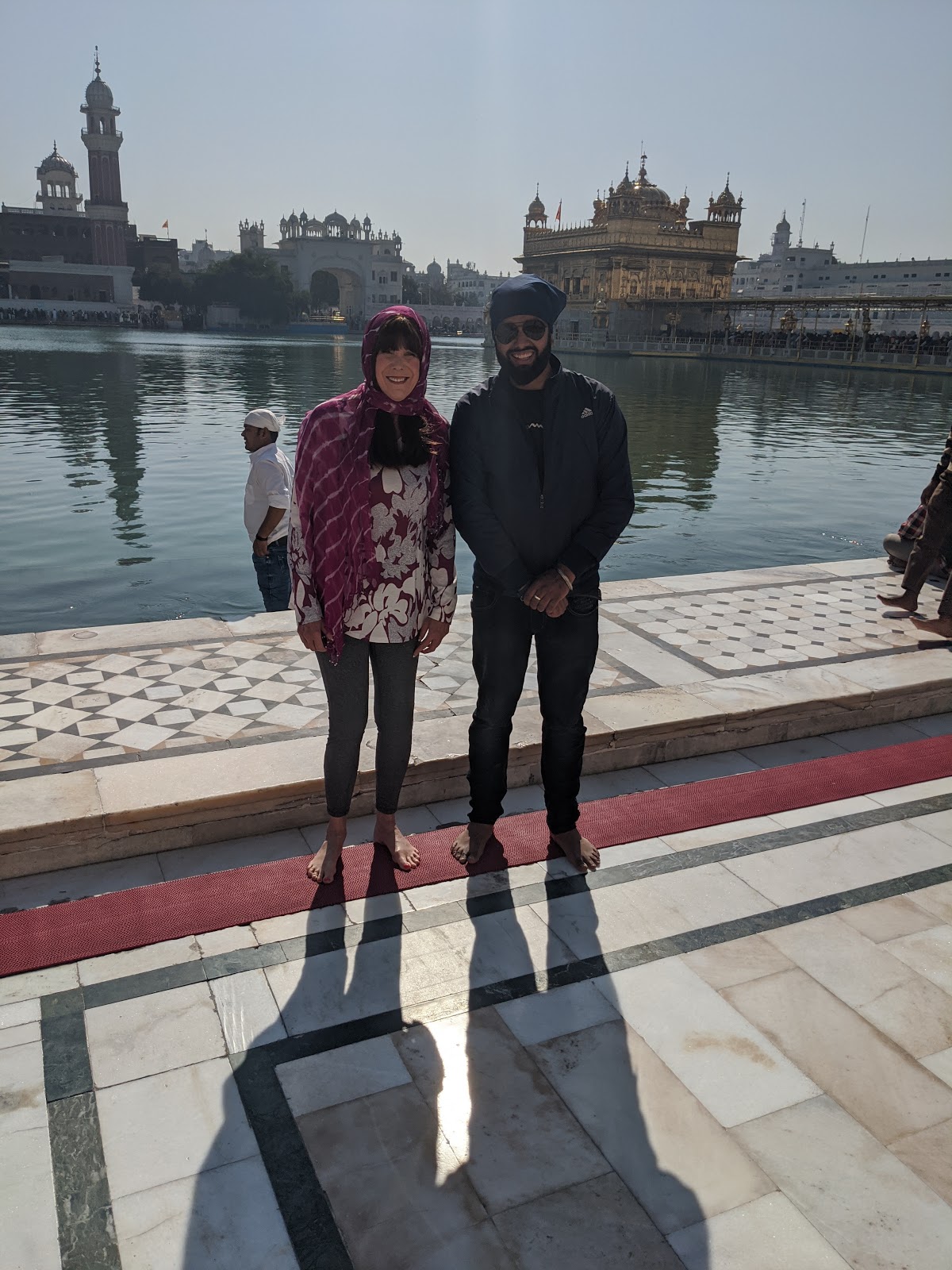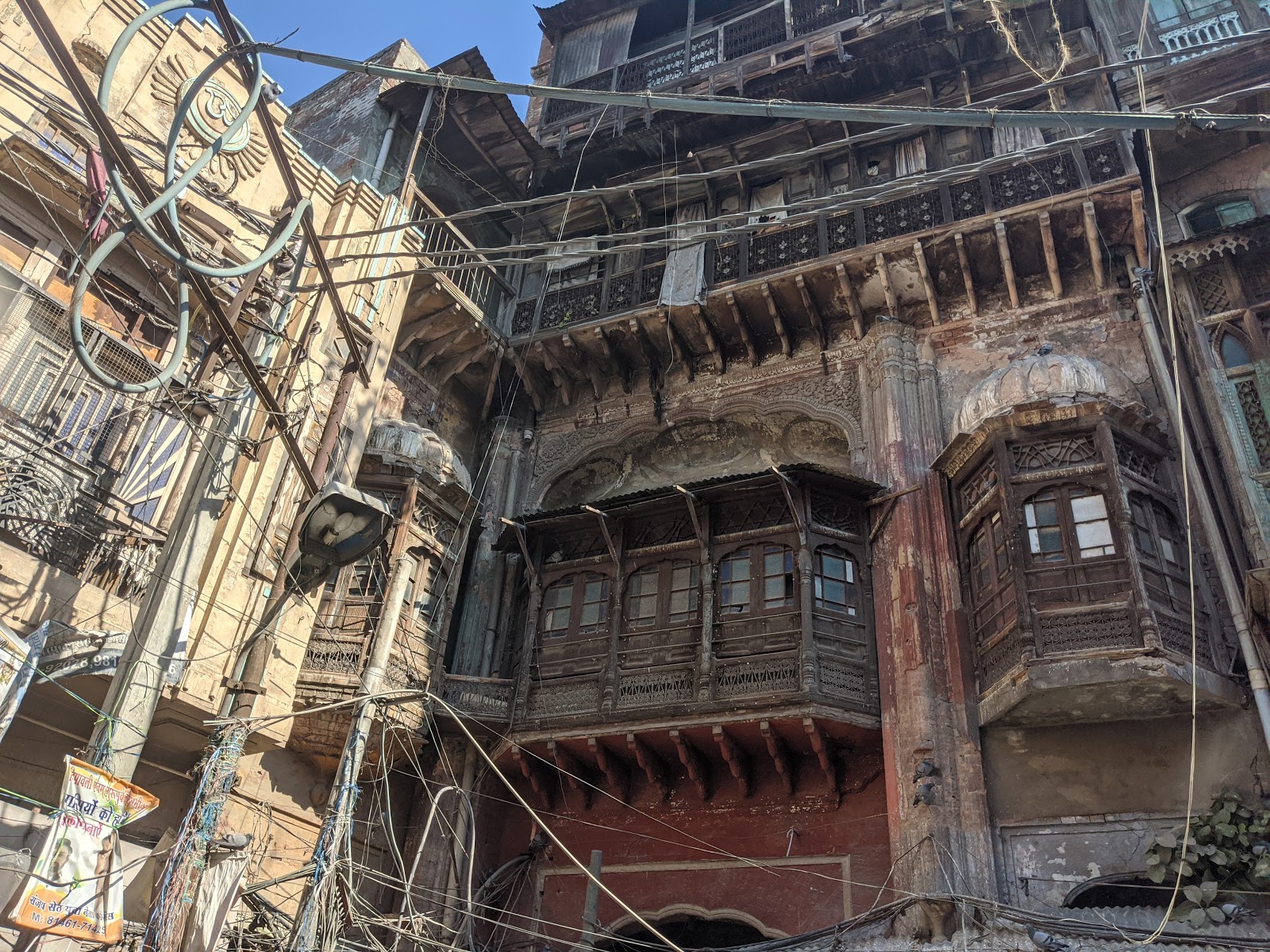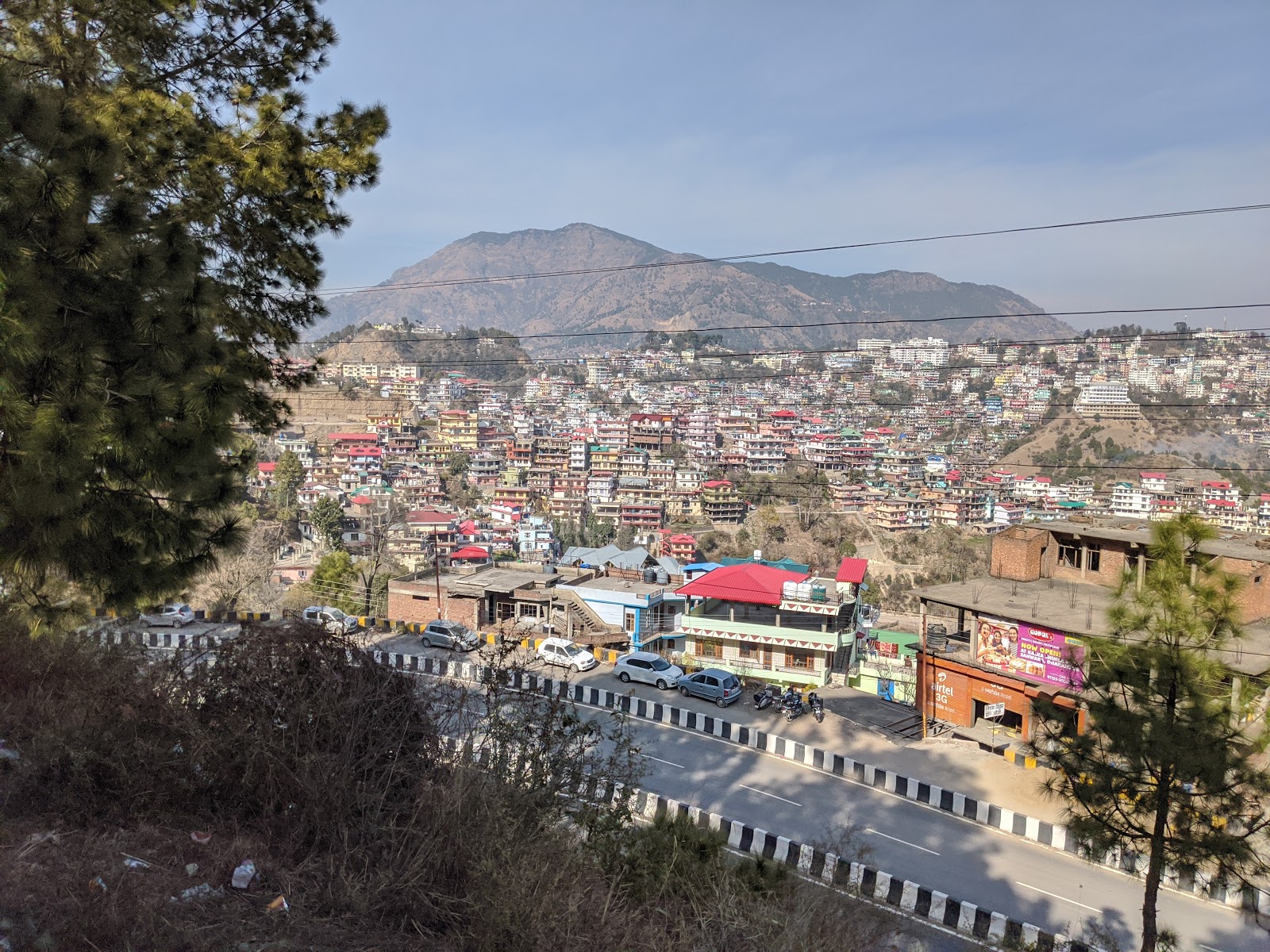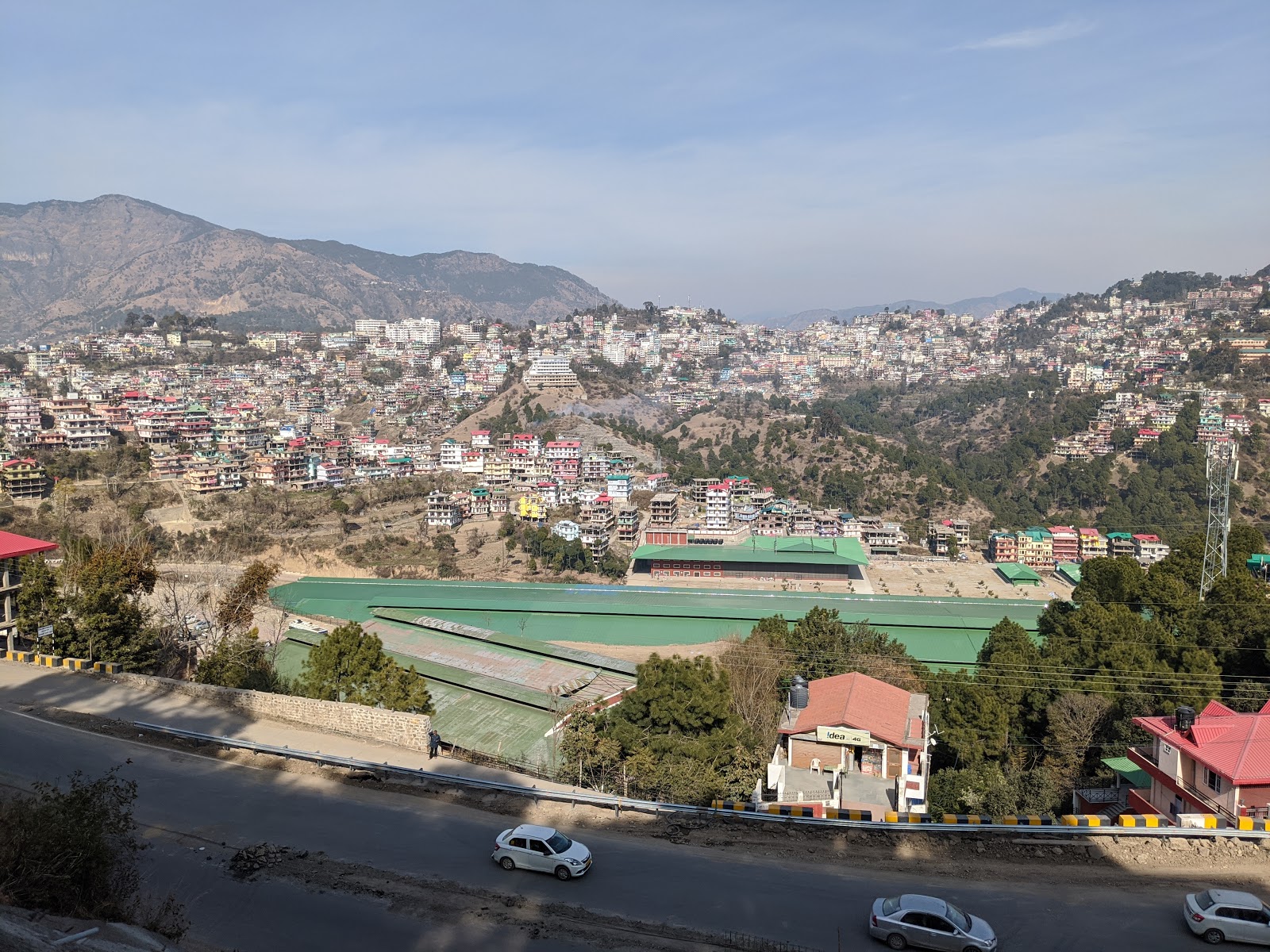 |
| Sunrise over the Ganges River. |
The amount of history and information flooding our minds is astounding. We’ve learned an incredible amount about the culture and history of India than we ever dreamed possible, even on this extended tour.
 |
| There were numerous narrow alleys to navigate to arrive at the Ganges River. |
Our guides have been articulate and knowledgeable, accompanied by a passionate sense of pride about their country, its rich history, and its exceptional people.
 |
| Many open stalls are located in narrow alleys. |
We feel safe here except when walking on the streets with volumes of vehicles trying to make their way around us and us around them. We don’t have a sense of impending doom as we may in some areas of the world with significant populations, but we still proceed with considerable caution.
 |
|
Walking down these alleys is dangerous when motorbikes come whizzing while honking their horns. Our guide Avi and Tom, kept me safe from being run over.
|
Varanasi has 3,676,841 people and covers an area of 43.28 square miles which is relatively small compared to many other cities in India, thus, the density of the traffic and people on the streets.
 |
| Cows are sacred animals in India. Hindu people do not eat any meat. The cow is revered for its milk, for making and other dairy products, and for their dung used to build fires. They are sacred and adored, well-fed, and nurtured well into old age. They often wander the streets during the day, always returning home to their owners at night. |
 |
| One of several cremation sites along the Ganges in Varanasi. Women prepare the bodies while men attend the cremation for however many hours it takes. Bodies are cremated within six hours of death when possible. The cremation fee is typically INR 14306.31, US $200, and most families have enough funds to cover the cost. The ashes are pushed into the river. Note the firewood in this scene. |
These stunning facts resulted in yesterday morning’s enthusiastic visit to the Ganges River. Most of us have heard about the significance of the Ganges River with preconceived notions of what it’s actually like.
Having the opportunity to take in all the wonder of this mystical place and learn about its history and its people left us reeling with excitement. At precisely 6:00 am, our guide Avi arrived at the hotel to escort us on foot through the meandering narrow alleys and roads, already packed with citizens preparing for their day.
 |
|
Local workers sift through the ashes in hopes of discovering some treasure they can resell.
|
That walk to the Ganges River was an experience in itself. We wandered past cows that had to move to let us pass, stray dogs awakening from the night’s sleep atop carts and tables, and goats meandering in the doorways of their places of residence.
There were countless puddles and slippery areas from the residents washing the cobblestone walkways overnight to reduce the dung produced by all the wandering animals. We never saw this much dung while in the bush in Africa.
 |
| Centuries ago, maharajas built many fine buildings and palaces along the river, most of which are currently occupied regardless of their condition. |
The shopkeepers had begun to set up their various wares, hoping early morning passersby might partake of some of their offerings on the way to the river. Already the smells of incense and spices wafted through the air.
The uneven and sketchy walk transpired over no less than 20 minutes as we carefully observed every footfall along the way. It would have been easy for me to fall when I’m still not as stable as I’d like to be, while Tom hung onto me, so surefooted himself.
 |
| The evidence of architectural expertise and creativity remains today. |
We walked up and down no less than 20 total flights of steps. Although I don’t get too out of breath (no more than anyone), my legs aren’t steady especially heading down steps instead of climbing up.
I felt like a puppet dangling my legs over each step in an attempt to avoid falling while heading down the steep stairs of the ghats. But, I continued with nary a complaint, with Tom and Ari offering a firm hand to guide me along.
 |
| The many stairways down to the river are called “ghats” as described here: Ghats in Varanasi are riverfront steps leading to the banks of the River Ganges. The city has 88 ghats. Most ghats are bathing and Puja ceremony ghats, while two ghats are used exclusively as cremation sites. Most Varanasi ghats were rebuilt after 1700 AD, when the city was part of the Maratha Empire. The patrons of current ghats are Marathas, Shindes (Scindias), Holkars, Bhonsles, and Peshwes (Peshwas). Many ghats are associated with legends or mythologies, while many ghats are privately owned. Morning boat rides on the Ganges, across the ghats is a popular visitor attraction. |
Once we arrived at the river, getting onto the rowboat was tricky when we had to step from one of the last steps directly onto a little wooden platform that was hardly secure. A molded plastic chair was awaiting me, and we situated ourselves for good photo ops.
 |
| Shiva, the Goddess, and Vishnu the God, of many, are represented in blue on these two structures. |
We were on that boat no less than 75 minutes while the boat owner continually rowed. The experience was more significant being in a rowboat as opposed to a fancy motorboat. This was an authentic experience.
 |
| We purchased these two offerings to light and placed them into the river with a prayer. The cost was INR 40, US 56 cents for the two. Of course, after the lengthy rowboat ride, we generously tipped the driver. |
After the women bathe, there are curtained areas where they can change into dry sarongs and make their way back to their designated city areas for the day. Most street workers and vendors are men, although women are seen in some of the more upscale women’s clothing shops.
The priests were engaged in the ceremonial sunrise rituals, enacted specific decorated areas, which we’ll share in tomorrow’s post about the evening ritual at the river, again a unique and fascinating experience, one we’ll never forget.
 |
| Two dogs, most likely siblings, are checking out the scenery. Stray dogs are often fed by the locals. They don’t bark and are gentle around people. |
But, there we were, sitting in a small rowboat scouring the shores of the Varanasi side of the Ganges River, where people were bathing, priests were chanting, deceased bodies were being cremated, and the sun was rising on the horizon.
Tom looked at me as he often did with a wide grin and said, “Who would have thunk?”
Yes, and in my usual manner, I said, “Pinch me. Is this happening?”
 |
|
Tom and the sunrise over the Ganges River.
|
We smiled at one another, knowing in our hearts that continuing on our journey to see the world was what we were meant to do. And, there’s so much more yet to come. Please stay with us as we share India with all of you through our eyes, through our hearts, and our minds.



































































